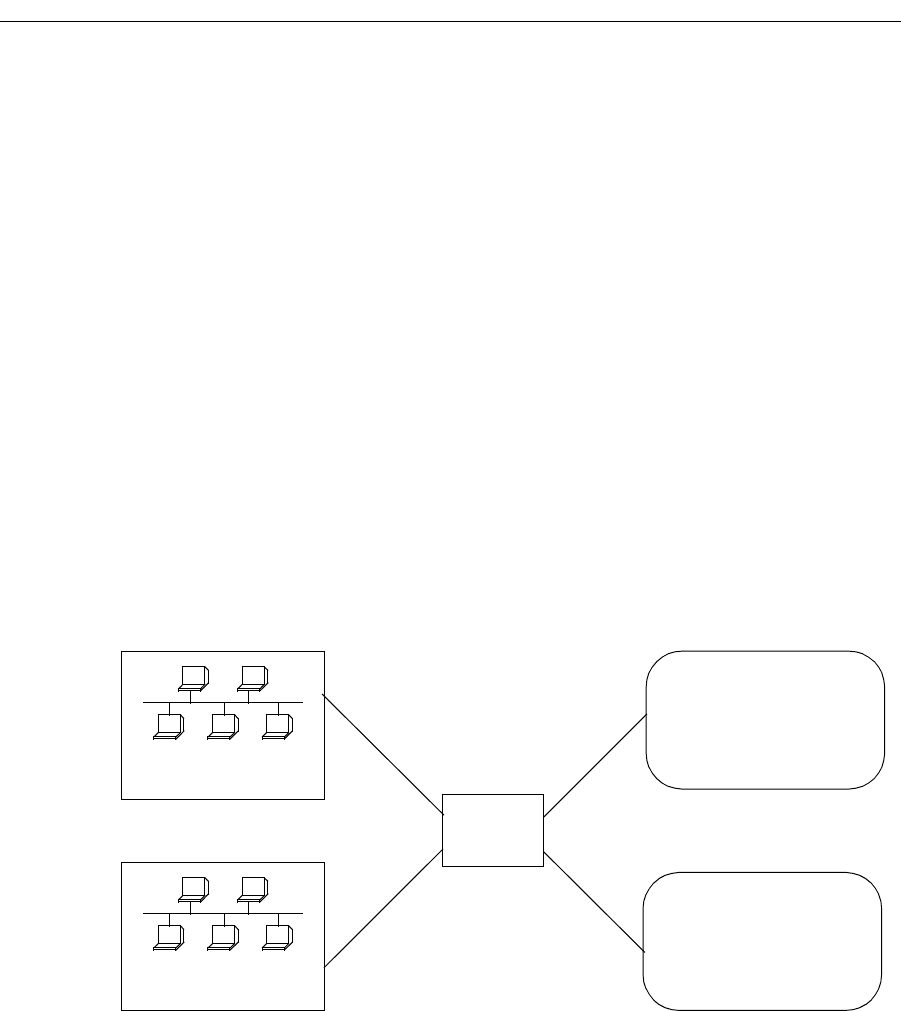Network Router User Manual
Table Of Contents
- Notices
- Contents
- About This Manual
- Introduction
- Hot Swapping Line Cards and Control Modules
- Bridging Configuration Guide
- Bridging Overview
- VLAN Overview
- Configuring SSR Bridging Functions
- Monitoring Bridging
- Configuration Examples
- SmartTRUNK Configuration Guide
- ATM Configuration Guide
- Packet-over-SONET Configuration Guide
- DHCP Configuration Guide
- IP Routing Configuration Guide
- IP Routing Protocols
- Configuring IP Interfaces and Parameters
- Configuring IP Interfaces to Ports
- Configuring IP Interfaces for a VLAN
- Specifying Ethernet Encapsulation Method
- Configuring Jumbo Frames
- Configuring Address Resolution Protocol (ARP)
- Configuring Reverse Address Resolution Protocol (RARP)
- Configuring DNS Parameters
- Configuring IP Services (ICMP)
- Configuring IP Helper
- Configuring Direct Broadcast
- Configuring Denial of Service (DOS)
- Monitoring IP Parameters
- Configuring Router Discovery
- Configuration Examples
- VRRP Configuration Guide
- RIP Configuration Guide
- OSPF Configuration Guide
- BGP Configuration Guide
- Routing Policy Configuration Guide
- Route Import and Export Policy Overview
- Configuring Simple Routing Policies
- Configuring Advanced Routing Policies
- Multicast Routing Configuration Guide
- IP Policy-Based Forwarding Configuration Guide
- Network Address Translation Configuration Guide
- Web Hosting Configuration Guide
- Overview
- Load Balancing
- Web Caching
- IPX Routing Configuration Guide
- Access Control List Configuration Guide
- Security Configuration Guide
- QoS Configuration Guide
- Performance Monitoring Guide
- RMON Configuration Guide
- LFAP Configuration Guide
- WAN Configuration Guide
- WAN Overview
- Frame Relay Overview
- Configuring Frame Relay Interfaces for the SSR
- Monitoring Frame Relay WAN Ports
- Frame Relay Port Configuration
- Point-to-Point Protocol (PPP) Overview
- Configuring PPP Interfaces
- Monitoring PPP WAN Ports
- PPP Port Configuration
- WAN Configuration Examples
- New Features Supported on Line Cards

SmartSwitch Router User Reference Manual 211
Chapter 15: IP Policy-Based Forwarding Configuration Guide
IP Policy Configuration Examples
This section presents some examples of IP policy configurations. The following uses of IP
policies are demonstrated:
• Routing traffic to different ISPs
• Prioritizing service to customers
• Authenticating users through a firewall
• Firewall load balancing
Routing Traffic to Different ISPs
Sites that have multiple Internet service providers can create IP policies that cause
different user groups to use different ISPs. You can also create IP policies to select service
providers based on various traffic types.
In the sample configuration in Figure 20, the policy router is configured to divide traffic
originating within the corporate network between different ISPs (100.1.1.1 and 200.1.1.1).
Figure 20. Using an IP Policy to Route Traffic to Two Different ISPs
HTTP traffic originating from network 10.50.0.0 for destination 207.31.0.0/16 is
forwarded to 100.1.1.1. Non-HTTP traffic originating from network 10.50.0.0 for
destination 207.31.0.0/16 is forwarded to 200.1.1.1. All other traffic is forwarded to
100.1.1.1.
Group user-a
10.50.*.*
Group user-b
11.50.*.*
ISP1
100.1.1.1
ISP2
200.1.1.1
et.1.1
et.1.2
Policy
Router










